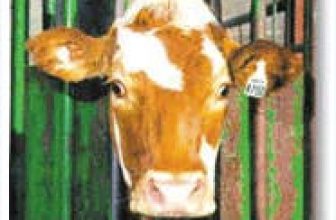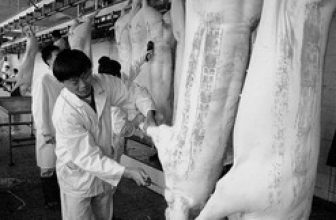
Successful Cases of Internet of Things Chicken Raising
[ad_1]
As one of the strategic commanding heights of the new round of economic and technological development, it is not new for the Internet of Things to show its talents in the secondary and tertiary industries. Combining the Internet of Things with the primary industry is still a relatively new thing. 44-year-old Wen Zhi told reporters with a smile: “I have been raising chickens for more than 20 years. When there is no automation, I can only raise 5,000 chickens. Now I can raise 15,000 chickens. My wife can do it by pressing a button on her mobile phone. Now, I can be liberated to cultivate mountains and engage in forestry and planting trees, which is another income.” Wen Zhikai, who has a car and a house, points to his car and feels that life is happier than the people in the city. This is the real life of an ordinary farmer in Shitouchong Village, Zhu Town, Xinxing County, Yunfu City, Guangdong Province. “Now I use the Internet of Things to manage the chicken house. I bring my mobile phone with me. If I am outside, I can use the mobile phone to understand the situation of the chicken house. The rain curtain can be lowered with the touch of a button. The Internet of Things technology can also automatically feed and adjust the fan. Cool down, turn on the lights at night…” Wen Zhikai introduced proudly.

It was Guangdong Wen’s Food Group Co., Ltd. that helped Wen Zhikai realize the modern management of chicken farming. On the LED screen of the company’s data information center, the real-world pictures of the cooperating farmer’s chicken coops, the bar graph of data changes, and the data of the raisers are all clearly displayed. “Pigs and chickens also need the Internet of Things,” Wen Pengcheng, chairman of Guangdong Wen’s Food Group Co., Ltd., pointed to the screen and told reporters: “Like Wen Zhi opening an account, we can not only see the chicken coop for the last 1 hour, but also the last 12 hours. According to the temperature changes, we can also know the income of this farmer’s “doubling plan”. After half a year, the operating profit of this household has increased from 40,000 to 70,000 yuan.”
A person in charge of the Wen Group told reporters: “my country has generally promoted the use of mechanization in the cultivation of rice, corn, etc., but the automation of the chicken and pig breeding projects has been slow, and the breeding management in many places is still at the traditional manual labor stage. The labor efficiency is low, the labor intensity is high, and the breeding efficiency is difficult to improve, which is not compatible with the requirements of large-scale and intensified under the new situation. Cooperate in the development of professional account management and other business systems within the local area network. In 2005, the centralized information system, namely the EAS system, was implemented. At the same time, a decision support data platform capable of real-time feedback of the macro operation status of the entire group was established.
Through the EAS system, businesses such as procurement, feed management, sales, personnel management, and financial management can be processed in real time to ensure the standardization and standardization of each management link, while also achieving real-time production and operation data. “We have established application systems such as chicken house temperature and humidity monitoring and cow estrus monitoring, and have realized the data connection between the wireless sensor network and the EAS system, which has significantly improved the system’s real-time monitoring capability of the production process,” Wen Pengcheng told reporters. “If a farmer can reach the number of 15,000 chickens per batch, the Wen Group will provide him with equipment.” The Wen Group set up a research institute to develop the Internet of Things system for the livestock breeding industry, and set aside 20 million yuan for the Internet of Things. Special funds and subsidies to farmers for automation construction will increase the proportion of new demonstration households from the current 3% to 10%.
Zhu Lifang, a farmer in Shitouchong Village, Zhuzhen, and Wen Group have established two chicken farm accounts through the cooperation of “company + farmer”. In the Wen Data Information Center, I saw that Zhu Lifang’s profit in 2010 from an account was 48,000 yuan. After the doubling plan, her profit in 2011 increased to 98,000 yuan. Another account was opened in June 2011, and the system showed that it had made a profit of 65,000 yuan in the past six months. In October 2010, Wen’s Group issued the “Efficiency and Benefit Multiplying Plan for Farmers”, which plans to double the efficiency and benefits of Wen’s farmers after five years. That is, the average household at the time raised 7,500 animals per batch. The number of chickens has been increased to 15,000, and the average annual breeding benefit per household has increased from 40,000 to 80,000 at that time.
“Only through the technological form of the Internet of Things can the production capacity and benefits of farmers be doubled. This form has also realized the transformation and upgrading of agriculture, from relying on labor intensity to relying on mechanization and intelligent operation,” Wen Pengcheng told reporters, ” For cooperative farmers, the Internet of Things can increase the farming scale of the farmers. This process from traditional to automated to intelligent enables farmers to expand the scale of production without changing manpower, and double the benefits and benefits. Even more.” Wen Zhikai’s Internet of Things chicken coop started in April last year. Wen Zhikai used 200,000 yuan in funding for the 1,800 square meter chicken coop, and the Wen Group subsidized 200,000 yuan. In the past, raising chickens earned 2-2.5 yuan each, but now they can earn 3.5-5 yuan. After using the Internet of Things technology, each farmer’s annual income is at least 150,000-200,000 yuan. At present, the main force engaged in the production of traditional agricultural products is farmers over the age of 40, and the young generation farmers under the age of 30, most of whom choose to go to cities and work outside. Among the 51,000 cooperative farmer households of Wen’s Group distributed in more than 20 provinces (cities, districts) across the country, the proportion of farmer households over 40 years old accounted for 72.4% (of which 47.9% were over 45 years old). We must not only promote the transformation and upgrading of Wen’s model, but also enhance the attractiveness of agriculture, so that a new generation of farmers are willing to use modern agriculture as their career choice.
In Europe and the United States, agriculture and livestock industries are not low-income industries. In addition to large government subsidies, modern and intensive production methods have also enabled farmers to obtain income comparable to that of urban residents. Many modern family farms in the United States have reached It even exceeds the income of the middle class. As the world’s top five and China’s largest chicken and pig farming company, Wen’s Group listed 770 million broilers and 6.63 million slaughtered pigs in 2011, achieving a sales revenue of 31 billion yuan, and has now driven the development of 51,000 cooperative farmers For chicken and pig breeding, the average household income of cooperative farmers reached 63,200 yuan in 2011, a year-on-year increase of 39.8%. “We plan to achieve 1.4 billion broilers on the market and 15 million pigs for slaughter by 2015, drive more than 100,000 cooperative farming households, and achieve sales income of 50 billion yuan,” Wen Pengcheng told reporters. “Such a scale of production and sales will definitely emerge. A large number of modern family farmers.”
Beginning in 2012, Wen’s Group is preparing to build 500 modern farm demonstration households to encourage other cooperative farmers to participate in the upgrade, and it will take about 10 years to complete the full upgrade. According to the preliminary conception, a modern family farm is a comprehensive agricultural base with chicken and pig breeding as the main business and other farming as a supplementary business. Among them, the scale of raising broilers is 150,000 or more per year, the comprehensive benefit of the family farm reaches 200,000 yuan/year or more, and the production management uses mechanical automation equipment. Wen Pengcheng described the future of Chinese-style family farms in his mind like this, “To allow Chinese farmers to grow into modern family farmers, they can entertain and remotely control the breeding site through the Internet of Things.”
[ad_2]





